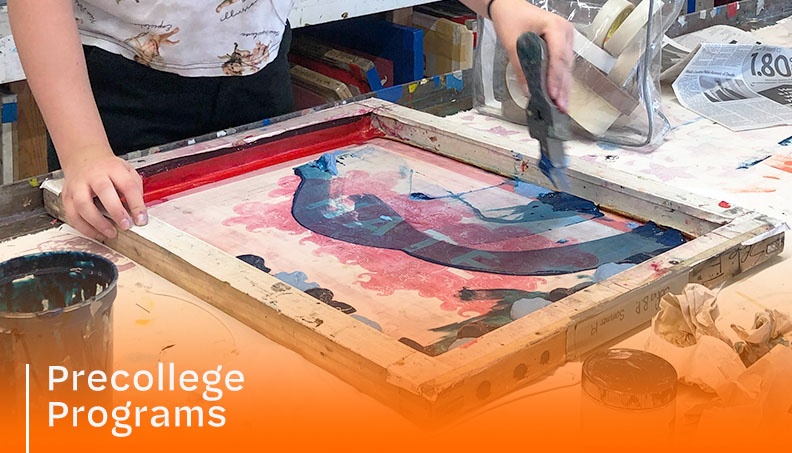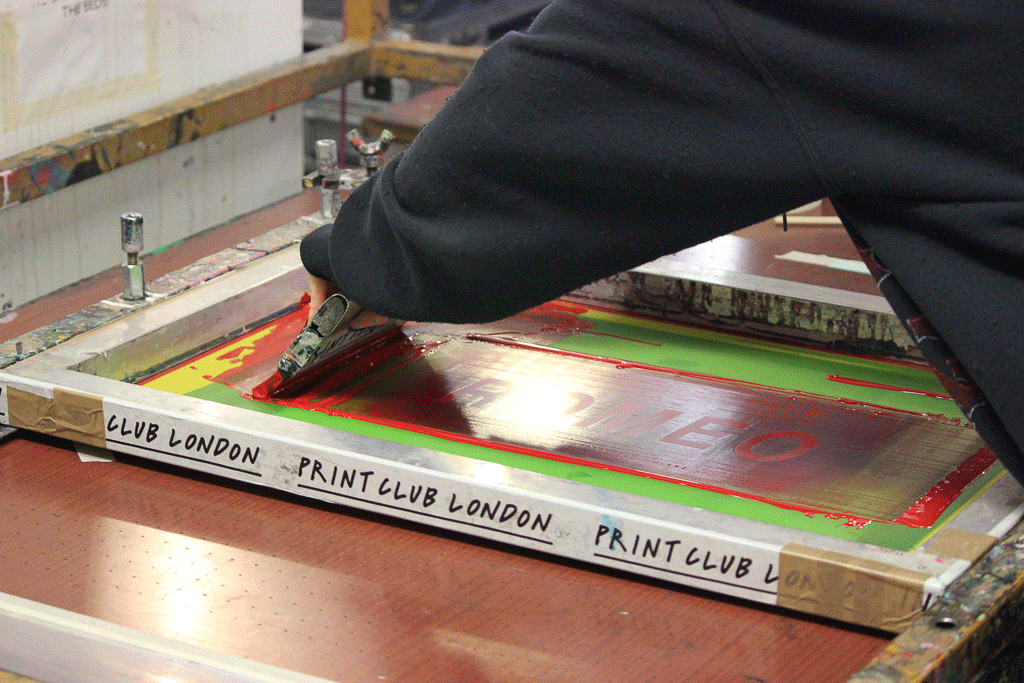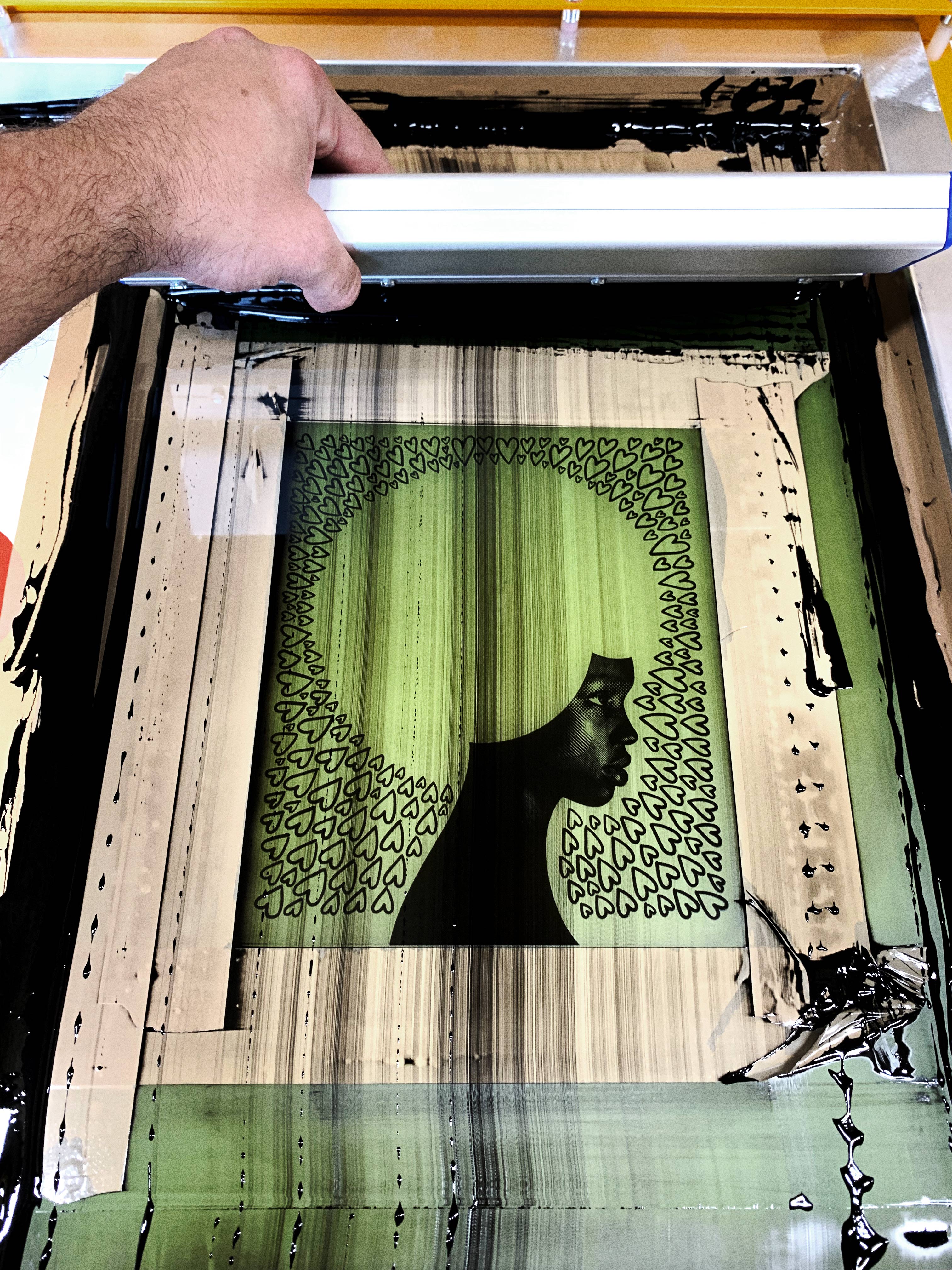Discover the Numerous Kinds Of Screen Printing Techniques for Your Next Task
Screen printing uses a varied array of methods that can improve any imaginative project. From typical techniques like serigraphy to contemporary technologies such as direct-to-garment printing, each strategy has its unique advantages. Specialty choices, including eco-friendly and metal inks, introduce a lot more possibilities. Understanding these techniques can significantly affect the last result. However, the obstacle depends on choosing one of the most ideal method for particular requirements and preferred results. What factors should one think about?

The Essentials of Screen Printing
Screen printing may appear complicated, it is basically a straightforward process that involves moving ink via a mesh screen onto numerous surfaces. The strategy begins with the production of a pattern, which specifies the style to be published. This stencil is affixed to a mesh screen, typically constructed from polyester or nylon. Once the stencil is in place, ink is related to the screen and pushed through the mesh using a squeegee, resulting in the preferred pattern being published on the underlying material.
Screen printing can be performed on a wide variety of substrates, consisting of plastic, paper, and fabric, making it a versatile option for numerous jobs. The procedure permits vibrant shades and complex layouts, making it prominent in markets such as style, advertising and marketing, and art. Understanding these essentials equips individuals with the foundational knowledge required to explore advanced methods in screen printing.
Typical Screen Printing Techniques
Standard screen printing strategies have actually been used for centuries, maintaining the craftsmanship and creativity of this method. This method utilizes a mesh screen to move ink onto a substratum, such as fabric or paper, enabling vivid and resilient layouts. The procedure begins with creating a stencil, which obstructs particular areas of the screen to regulate where the ink will certainly be used.
One popular method is serigraphy, usually utilized for limited versions and artistic prints. One more is the use of water-based inks, which are environment-friendly and provide a soft feel on textiles - 10:9 Design contact. Additionally, conventional methods can consist of hand-operated printing, where artisans use ink with a squeegee, ensuring precision and focus to detail
These techniques continue to be valued in the industry for their responsive high quality and the special appearances they produce, appealing to both consumers and creators who value the heritage of screen printing.
Digital Screen Printing Innovations
As the need for faster manufacturing and customization in the printing sector has actually surged, digital screen printing innovations have actually emerged as a game-changer. This innovation blends conventional screen printing approaches with electronic processes, enabling fast prototyping and intricate designs that were previously difficult to accomplish. One considerable improvement is the introduction of direct-to-garment (DTG) printing, which assists in top notch, full-color prints on different fabrics without the demand for screens. Additionally, developments in ink formulations have actually led to eco-friendly choices that preserve dynamic shades while reducing environmental influence. The usage of automated systems additionally simplifies manufacturing, minimizing labor costs and improving accuracy. These developments not just deal with little batch orders and individualized styles yet additionally permit quicker turn-around times, making them optimal for companies concentrated on meeting client demands in a hectic market. Digital screen printing, as a result, stands for a necessary development in the domain name of printing strategies.
Specialty Screen Printing Approaches
Discovering specialized screen printing approaches exposes a varied variety of techniques that press the borders of imagination and capability in the printing industry. Amongst these, glow-in-the-dark inks give an one-of-a-kind aesthetic result, making styles come alive in low-light conditions. Metal inks, understood for their glittering coating, include a touch of deluxe to published materials. Another cutting-edge method is discharge printing, which removes color from the textile instead of including ink, causing a soft, classic feeling. High-density printing develops an increased structure externally, improving tactile engagement. Additionally, water-based inks are gaining popularity for their lively shades and minimized environmental influence. Each of these specialized methods caters to particular style needs, allowing brands and musicians to create standout products that resonate with their audiences. By leveraging these methods, services can raise their screen printing jobs to new heights, guaranteeing memorable perceptions.
Eco-Friendly Screen Printing Options
Eco-friendly screen printing options are gaining grip as the industry changes in the direction of sustainability. Sustainable ink selections and using naturally degradable materials are essential parts in reducing the environmental effect of the printing process. By adopting these techniques, screen printers can contribute to a much more sustainable future while preserving high-quality outcomes.
Sustainable Ink Selections

Biodegradable Materials Usage
As the screen printing industry advances, the consolidation of eco-friendly products is coming to be increasingly essential for environmentally mindful practices. Producers and developers are currently discovering inks and substrates made from all-natural, renewable energies that decay more effectively than typical counterparts. These eco-friendly options minimize plastic waste and reduce environmental effect, lining up with the growing demand for sustainable items.
Typical examples consist of water-based inks and organic cotton materials, both of which reduce dangerous chemicals and advertise eco-friendliness. Brand names that take on these products frequently boost their market allure, attracting consumers that focus on sustainability. As understanding of ecological problems proceeds to climb, the shift towards naturally degradable materials in screen printing is likely to acquire energy, cultivating a greener industry criterion.
Selecting the Right Technique for Your Task
How can one figure out one of the most ideal screen printing technique for a particular task? The choice rests on numerous elements, consisting of the product to be printed on, the intricacy of the layout, and the wanted production quantity - 10:9 Design Screen Printing Texas. As an example, direct-to-garment printing is optimal for detailed designs with numerous shades, while standard screen printing excels for bigger runs of simpler graphics
Additionally, consideration of the end-use of the published item is crucial. For outside applications, strategies that provide durability and weather resistance, such as plastisol ink, may be preferred. Alternatively, environmentally-conscious projects might take advantage of water-based inks or naturally degradable materials.
Ultimately, understanding the project's unique demands enables an enlightened option, guaranteeing both aesthetic appeal and useful durability. By evaluating design complexity, material compatibility, and manufacturing scale, one can effectively choose one of the most ideal screen printing technique to meet their project's goals.
Frequently Asked Concerns
What Is the History of Screen Printing?
Screen printing stemmed in ancient China around 1000 AD, evolving with Japan and Europe. By the 20th century, it came to be prominent in business art and style, reinventing how layouts were generated and dispersed worldwide.

How Do I Prepare Artwork for Screen Printing?
To prepare artwork for screen printing, one must assure high resolution, use an appropriate shade mode, produce different layers for each color, and transform message to outlines, ensuring compatibility with the printing process and preferred result.
What Materials Are Finest for Screen Printing?
The very best materials for screen printing consist of top quality inks, resilient displays, and ideal substratums like cotton, polyester, or blends. In addition, using suitable solution and squeegees can boost the printing process and final results.
Can I Screen Print at Home?
Yes, screen printing in the house is feasible. With the right materials, configuration, and techniques, individuals can develop high-quality prints. Nonetheless, mindful consideration of office and equipment is essential for successful results.

What Prevail Errors in Screen Printing?
Common mistakes in screen printing include improper direct exposure times, inadequate ink consistency, imbalance of displays, inadequate cleansing of products, and disregarding to check prints. These errors can endanger the high quality and precision of the final item.
Screen printing might seem facility, it is essentially an uncomplicated procedure that includes transferring ink with a mesh screen onto numerous surface areas. As the need for faster manufacturing and modification in the printing sector has actually risen, digital screen printing developments have actually arised as a game-changer. Discovering specialized screen printing approaches reveals a diverse selection of methods that push the limits of imagination and performance in the printing sector. The best products for screen printing consist of high-quality inks, sturdy screens, and suitable substratums like cotton, polyester, or blends (10:9 Design Embroidery). Common mistakes in screen printing consist of inappropriate exposure times, poor ink uniformity, misalignment of displays, insufficient cleaning of materials, and neglecting to check prints